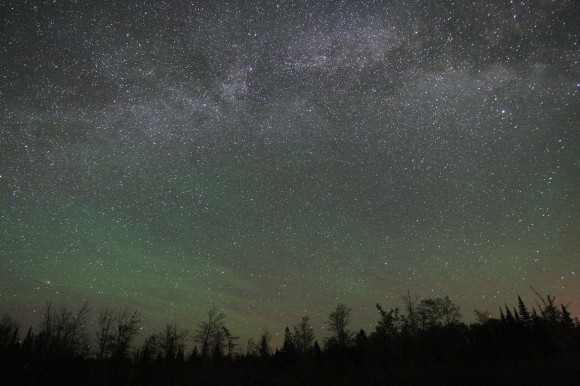There are some great explanations on StackExchange of why we see a blue sky on Earth, eg here.
Namely, that it's a combination of :
- (a). the mix of colours from the Sun (eg, more green than indigo), plus
- (b). Rayleigh scattering from gas molecules (preferentially scattering shorter wavelengths, ie indigo/blue) plus
- (c). the sensitivity of our eyes (we see green best, and blue better than
indigo).
And, that when the Sun is low and thus light going through ~2000km of atmosphere rather than ~10km (do the trig), Rayleigh scattering means there's very little blue light left, so the end effect is a reddish sky. (A little counterintuitive, but this is a good explanation of how that works.)
My question is why is sky red on Mars.
I've seen two explanations, both dependent on the fact that the much thinner Martian atmosphere means the effect of Rayleigh scattering of light by gas is dominated by the effect of airborne dust.
Explanation one: the airborne dust scatters out all the blue light, so that the sky we'd see is reddish for same reason our sunrise/sunset sky is reddish. (Because there's so much dust?)
Or, simply that because the dust is red (because the surface of Mars is red – ie, lots of iron oxide), we would see a reddish sky.
Can anyone help with this?


Best Answer
With great thanks to the wonderful Dr Eriita Jones of the University of South Australia...
Mar's reddish sky is due to a combination of:
The amount of airborne dust (there's a lot of it - due to the dryness of the Martian surface, the very small size of the dust grains, and the planet's lower gravity).
The thinness of the atmosphere, which means there is less scattering of photons by the atmospheric gases (which means less Rayleigh scattering, though it does occur).
Because all that airborne dust is more similar in size to the incident visible photons, more Mie scattering occurs than Rayleigh scattering.
Mars dust is about 10—100 micrometres, visible wavelengths are approx 0.35—0.7 micrometres ...ish) while the $\rm{N}_2$ and $\rm{O}_2$ molecules or our atmosphre, or the $\rm{CO}_2$ molecules of the Martian atmosphere, are ~200—300 picometres, or a thousand times smaller.
Mie scattering (which happens when particle size approaches wavelength) preferentially scatters larger wavelength (redder) light, or more completely the angle of Mie scattering is more uniform for longer wavelengths, while shorter wavelengths (blues) tend to scatter at slight angles. This means that under Mie scattering, blue light tends to be deflected less than red light (thanks to Brian K for this explanation).
Conversely, Rayleigh scattering (when particle size is much smaller than wavelength, eg from gas molecules), which predominates in our own atmosphere, strongly preferentially scatters smaller wavelength (bluer) light (inversely proportional to $\lambda^4$).
So the key difference with Earth is there is less of the Rayleigh scattering (because of Mars' thin atmosphere) and more of the Mie scattering (caused by tiny Mars dust particles), so the Mie scattering dominates.